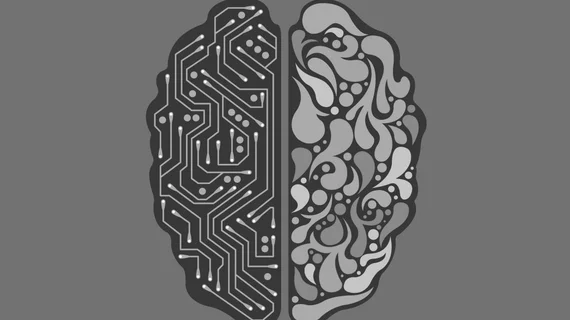Convolutional neural networks (CNN) are more accurate than even the most expert dermatologists in detecting skin cancer, researchers reported in Annals of Oncology this week.
Work led by Holger Haenssle, MD, a senior managing physician in the Department of Dermatology at the University of Heidelberg in Germany, found CNNs trained to detect malignant melanomas were significantly better at detecting skin cancers and their benign counterparts than trained dermatologists.
“My group and I are focusing on non-invasive technologies that may help physicians not to miss melanomas, for instance while performing skin cancer screenings,” Haenssle said in a release from the European Society for Medical Oncology. “When I came across recent reports on deep-learning algorithms that outperform human experts in specific tasks, I immediately knew that we had to explore these artificial intelligence algorithms for diagnosing melanoma.”
Haenssle and a team of physicians in Germany, the U.S. and France trained a CNN to detect skin cancer by exposing the technology to more than 100,000 images of malignant melanomas and benign moles. Only dermoscopic images were used, the study stated, meaning the CNN was exposed only to lesions imaged at a tenfold magnification.
“The CNN works like the brain of a child,” Haenssle said. “With each training image, the CNN improved its ability to differentiate between benign and malignant lesions.”
The researchers invited dermatologists from around the world to “compete” against the CNN in a diagnostic test, and 58 clinicians from 17 countries agreed. Of those dermatologists, Haenssle et al. wrote, more than half were experts with more than five years’ clinical experience.
The dermatologists were tested twice—once during an initial diagnosis of malignant or benign moles and then again one month later, when they were given additional information about the patients and provided with close-up images of the same studies. The doctors improved their diagnostic accuracy from 86.6 percent to 88.9 percent between phases, but the CNN was able to detect 95 percent of melanomas.
“The CNN missed fewer melanomas, meaning it had a higher sensitivity than the dermatologists, and it misdiagnosed fewer benign moles as malignant melanoma, which means it had a higher specificity,” Haenssle said. “This would result in less surgery.”
While dermatologists’ performance did improve, he said, the physicians couldn’t keep up with the CNN, which continued to outperform those doctors’ diagnostic abilities in each case. The authors said dermatologists shouldn’t worry about their positions, though—this finding will likely serve as a diagnostic aid rather than a replacement.
“I have been involved in research projects that aim at improving the early detection of melanoma in its curable stages for almost 20 years,” Haenssle said. “These findings show that deep learning convolutional neural networks are capable of outperforming dermatologists, including extensively trained experts, in the task of detecting melanomas.”

